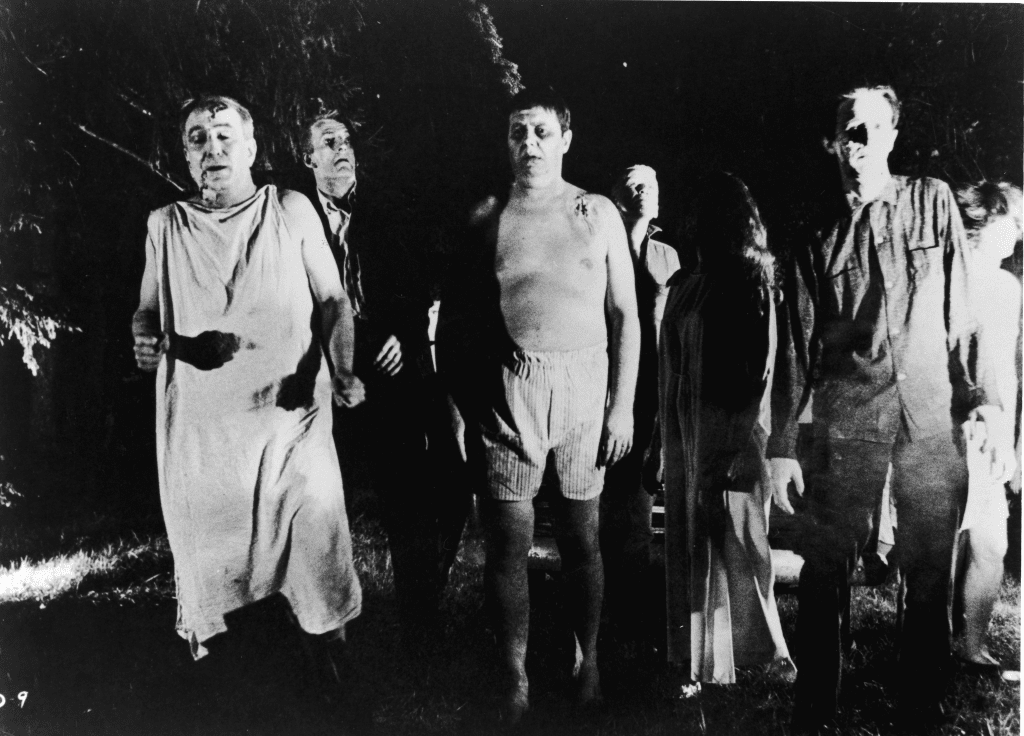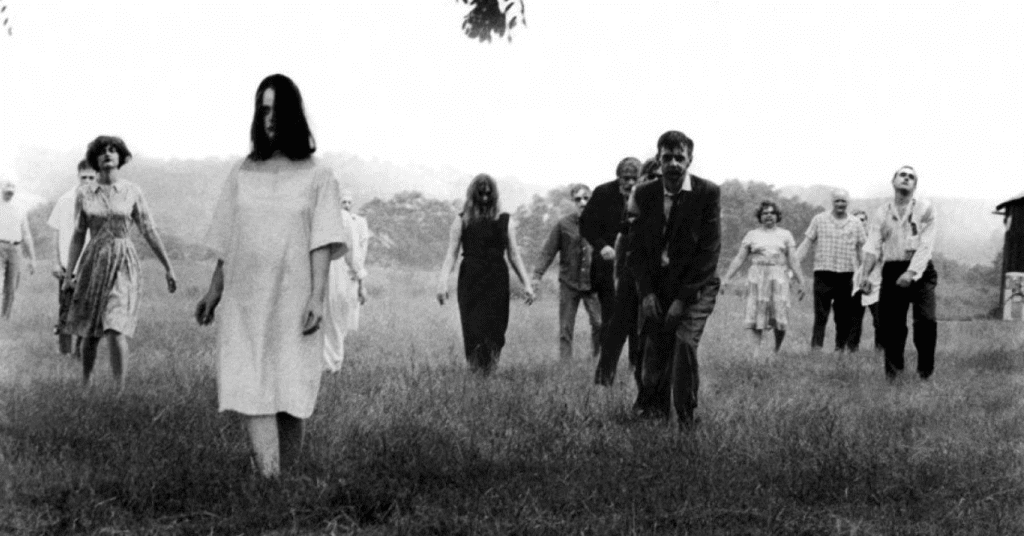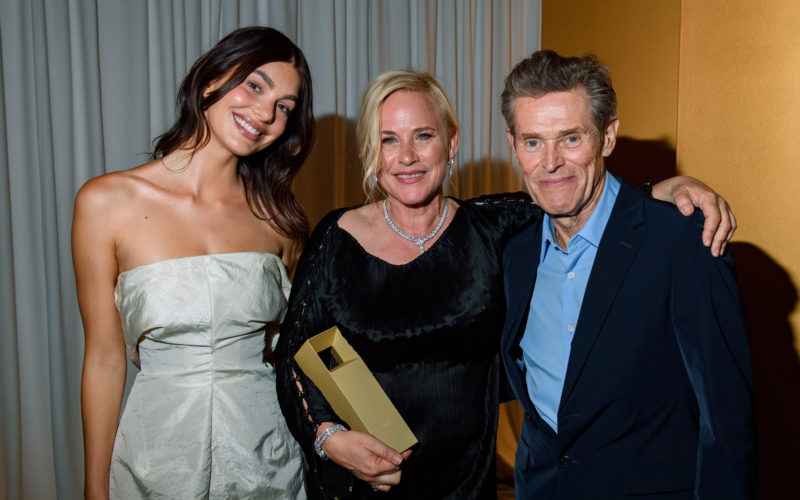Night of the Living Dead (1968) ain’t your typical Hollywood horror flick. It’s a raw, independent masterpiece that ripped through the genre like a flesh-hungry ghoul. Here’s the lowdown on 20 gritty facts about the making of this cult classic:
Budgetary Bloodbath (1): Made for a measly $114,000, this movie was a shoestring shocker that proved you don’t need millions to make a masterpiece. They spent more on sandwiches for the crew than the actual special effects!
Guerrilla Guts (2-3): Forget fancy studios. Romero and his ragtag crew shot on location in rural Pennsylvania, using local residents as extras who probably still have nightmares about the experience. They even filmed in a real cemetery – talk about morbid!
Chocolatey Carnage (4): Those realistic blood splatters? Mostly chocolate syrup and food coloring. Because with a budget that tight, every penny counted (and every penny went towards making audiences squirm).
Accidental Amblers (5): The now-iconic shambling walk of the zombies wasn’t planned. The actors were just plain exhausted after long, grueling shoots without breaks. Who knew exhaustion could be so terrifying?

Marketing Mishap (6): Early promos accidentally labeled the film a “comedy.” Imagine audiences expecting giggles and popcorn, then getting a face full of zombie gore. Talk about a bait-and-switch!
Breaking Racial Barriers (7): Duane Jones as the hero, Ben, was a bold choice in a segregated America. This wasn’t just a horror film; it was a social commentary with bite (pun intended).
Censorship Chaos (8): The film’s violence was so raw, it faced censorship battles. Some theaters refused to show it, while others demanded cuts. Guess audiences weren’t ready for this much unflinching horror.
Symbolism or Subconscious? (9): Some critics theorize the relentless pursuit of the zombies by white mobs could be a metaphor for racial tensions of the 1960s. Whether intentional or not, it adds another layer of unease.
Public Domain Peril (10): A copyright fight sent the film into the public domain, leading to a slew of sequels (some good, some downright awful). But hey, at least it kept the flesh-eaters shambling!
Practical Effects Prowess (11): Forget CGI. This film relied on good old-fashioned makeup and special effects. Think squibs (blood packets) and gruesome prosthetics – all created on a shoestring budget.
Moaning Mastermind (12): The iconic zombie moans? Courtesy of Judie Aronson, a sound effects artist who also played a small role. Talk about multi-talented (and slightly terrifying)!
Budget Brain Buffet (13): That disturbing close-up of a ghoul feasting on a brain? Not real brains (thankfully). They used a cow’s liver – a more affordable (and ethically sound) alternative.
A Franchise Built on Flesh (14): This film spawned a whole zombie apocalypse, with six sequels directed by Romero himself. Dawn of the Dead (1978) anyone?
Horror’s Hall of Fame (15): Night of the Living Dead’s groundbreaking style inspired countless horror films, solidifying the zombie apocalypse as a subgenre. Basically, it’s the godfather of all modern zombie flicks.
Critical Resurrection (16): Initially met with mixed reviews, the film has been reevaluated and is now considered a horror landmark. They may not have loved it in 1968, but critics sure appreciate it now.

More Than Just Monsters (17): Night of the Living Dead explores themes of consumerism, media manipulation, and societal collapse. It’s not just about the gore; it’s a scathing look at humanity.
Pop Culture Powerhouse (18): From parodies to homages, this film has become a pop culture phenomenon. You can’t escape the influence of these flesh-eating fiends!
Timeless Terrors (19): The film’s exploration of primal fears and the breakdown of society continues to resonate with audiences today. Maybe because it feels a little too real sometimes…
A Legacy of Innovation (20): Night of the Living Dead stands as a testament to independent filmmaking, resourceful special effects, and the power of horror to confront societal issues head-on. It’s a raw,
Night of the Living Dead: A Scrappy Masterpiece Born from Guts and Resourcefulness
Night of the Living Dead isn’t just a movie title splashed across a faded VHS tape. It’s a cinematic revolution born from the sheer grit and determination of a young George A. Romero. Imagine this: a shoestring budget that could barely buy lunch for the crew, filming on location in a real Pennsylvania cemetery with friends and family as your cast. Special effects? Forget fancy CGI. Think chocolate syrup for blood splatters and makeup meticulously crafted from everyday materials by a resourceful artist. The now-iconic shambling walk of the undead wasn’t even planned; it was the result of exhausted actors stumbling through long nights of filming, inadvertently creating a movement that perfectly embodied the slow, relentless terror of the reanimated corpses.
But Night of the Living Dead transcended its low-budget origins. It wasn’t just about the raw, unflinching gore that had audiences clutching their seats (though there was plenty of that). This film dared to hold a mirror to society, reflecting our anxieties about consumerism, the manipulative power of media, and the very fabric of civilization crumbling in the face of a terrifying threat. It forced you to confront primal fears and grapple with what it truly means to be human when the world descends into chaos.
This potent cocktail of social commentary and visceral horror became a cultural phenomenon. Night of the Living Dead wasn’t just a movie; it was a landmark achievement in independent filmmaking. It proved that even with limited resources and a whole lot of ingenuity, you could create something truly groundbreaking. The film’s influence is undeniable, inspiring countless filmmakers and forever changing the landscape of the zombie genre. So the next time you see a shambling ghoul on screen, remember the scrappy origins of Night of the Living Dead. It’s a testament to the power of independent filmmaking, a reminder that a passionate vision and a willingness to get your hands dirty can create a legacy that will continue to terrify and intrigue audiences for generations to come.


























































![Mason Ramsey – Twang [Official Music Video] Mason Ramsey – Twang [Official Music Video]](https://i.ytimg.com/vi/xwe8F_AhLY0/maxresdefault.jpg)





















